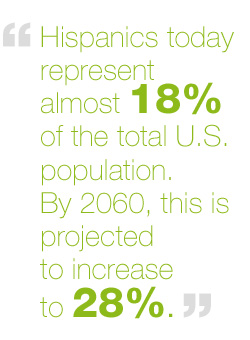Future Marketing - Crossing the Cultural Divide
If you watched any coverage from the 2018 World Cup, you surely noticed the international flavor of the advertising. Some ads were subtle, featuring international looking talent, but some you just couldn’t miss. Bud Light, for instance, started seeding their general market ads with Spanish embellishments weeks ahead of the World Cup. Volkswagen’s fun ads featured numerous nationalities sharing their love for the brand. And perhaps one of the best examples of cross-cultural advertising, Wells Fargo’s mobile app ads positioned itself as the hero for futbol-loving Mexican consumers everywhere.
Whether the ads were good, bad or somewhere in the middle, we loved them all. For one reason. The advertisers didn’t choose to tip-toe into in the cultural divide. They plunged in head first. In years past, ads leveraging cultural identity would have been one-offs specially produced for the event. But now, crossing the cultural divide is not an on-again/off-again tactic, it’s become an obsession for big advertisers. And with good reason, multicultural populations have hit 120 million in the U.S. and are projected to increase by 2.3 million every year. By 2044, Hispanics, African-Americans, Asian-Americans and other multicutural groups will become the majority according to 2014–2019 Nielsen Pop-Facts demographics.
But it’s more than statistics driving the marketing. It’s an established fact that multicultural consumers are an emerging force in America, known affectionately as "super consumers". Currently, Asian Americans, African Americans, and Hispanics make up the this group as they continue to increase their influence and purchasing power.
According to many market analysts, the future of marketing is cross-cultural. So, what is cross-culture marketing, exactly? MediaPost defines it as "one marketing program that leverages ethnic markets to reach across ethnic and general markets". Think of it as culturally-infused advertising that is equally as relevant on general market channels as it is on ethnic channels. The Wells Fargo ad mentioned earlier illustrates this very well.
Cultural traditions and social aspirations that drive multicultural consumers also resonate with mainstream targets, which can increase return on investment. This magnifies the business case for developing multicultural campaigns.
Let’s take a look at a few key stats on one of the most powerful of the super consumer groups; the Hispanic market:

- Hispanics today represent almost 18% of the total U.S. population. By 2060, this is projected to increase to 28%. This is huge!
- 82% of adult Hispanics say that they speak Spanish and 95% of them believe that it is important that future generations also respect and speak the language.
- 54% of Hispanics say that they are more loyal to the companies that show appreciation to their culture by advertising in their native language.
- Hispanics over-index at 56% in making a purchase online via their mobile, whereas non-Hispanics have 33% share in the shopping from the mobile device spectrum. This begs the question, Is your business online?
So, why are many marketers still struggling to connect with these groups? There could be a number of reasons for this… Total Market miscues, issues relating to cultural sensitivity and using ethnic stereotypes in advertising come to mind. But one of the most obvious reasons (from our perspective) is not understanding how to keep it real from an ethnic and brand/product perspective. It’s best to go all in if you’re going to venture into this type of advertising. This can cause a lot of uncertainty for brands, which poses a real dilemna for creative teams as well. Tread too lightly here and the advertising will come across as inauthentic or will totally miss the mark. This means wasted time and budget resulting in negative outcomes for the brand.
When we fully embrace the differences and complexities of each culture, such as language, buying habits, and culturally-influenced preferences, we'll be able to create more meaningful (and appreciated) messaging.
Don’t head into this unchartered territory without some guidance. If you’re a brand marketer and need to get an opinion on your Hispanic messaging, contact us. We have a team of professionals that can review your creative and help you develop it into a successful campaign. Contact us today to schedule a talk.